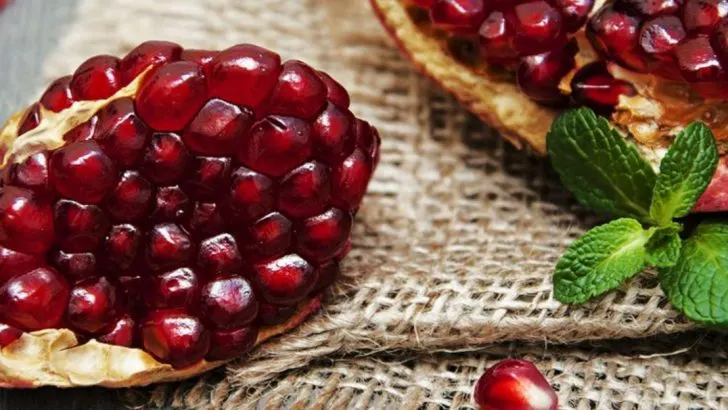You can grow a pomegranate tree in a pot— and yes, it can actually bear fruit. Forget the sad little sticks with leaves and zero payoff. This isn’t about decorative foliage. This is about harvesting your own sun-warmed, ruby-filled pomegranates right from your patio. But let’s be honest—most people get it wrong. They crowd the roots, drown the soil, and wonder why nothing happens. Pomegranates aren’t dramatic, but they do have standards. The good news? Once you learn what they really want, they’ll give you fruit so gorgeous you’ll feel like royalty. (Or at least like someone with an Instagram-worthy harvest.) Grab your biggest pot. Pick the right tree. And follow these 14 steps to go from “cute plant” to “holy fruit bomb.”
Choose the Right Variety
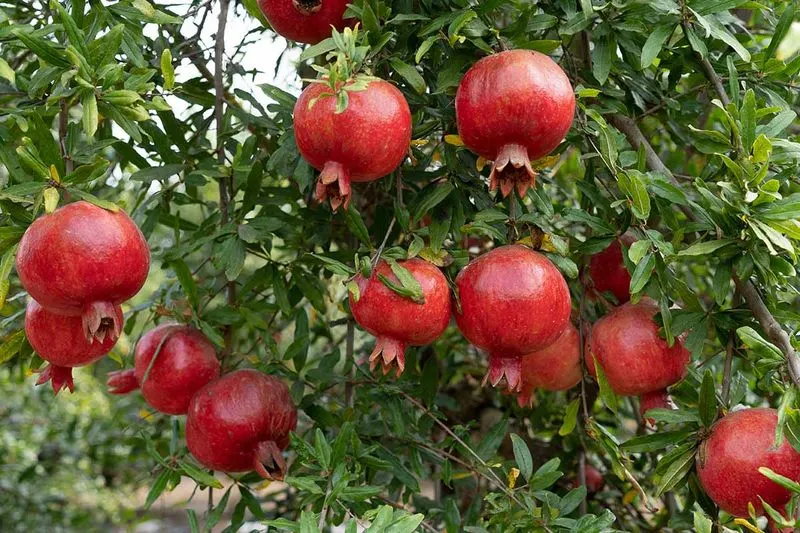
Selecting the right pomegranate variety is crucial for successful pot cultivation. Consider dwarf varieties like ‘Nana’ or ‘Provence’, known for their compact growth. These types thrive in containers and produce delectable fruits. Local climate and space availability also play a significant role in your choice. Many gardeners favor ‘Wonderful’ for its adaptability and robust fruiting. Remember, the variety you choose will determine the tree’s size, fruit yield, and overall care requirements. Invest time in researching and picking a variety that aligns with your environmental conditions and personal preferences.
Optimal Pot Selection

The choice of pot affects the tree’s health significantly. A large, sturdy pot with excellent drainage is essential to prevent root rot. Terracotta pots are ideal as they allow air circulation and moisture evaporation. Size matters; opt for at least 15-20 gallons capacity. This space allows the roots to spread comfortably. Ensure the pot has several drainage holes at the bottom to prevent waterlogging. Elevating the pot on pot feet adds an extra drainage layer. This step sets a strong foundation for your tree to flourish and bear fruit.
Selecting the Right Soil
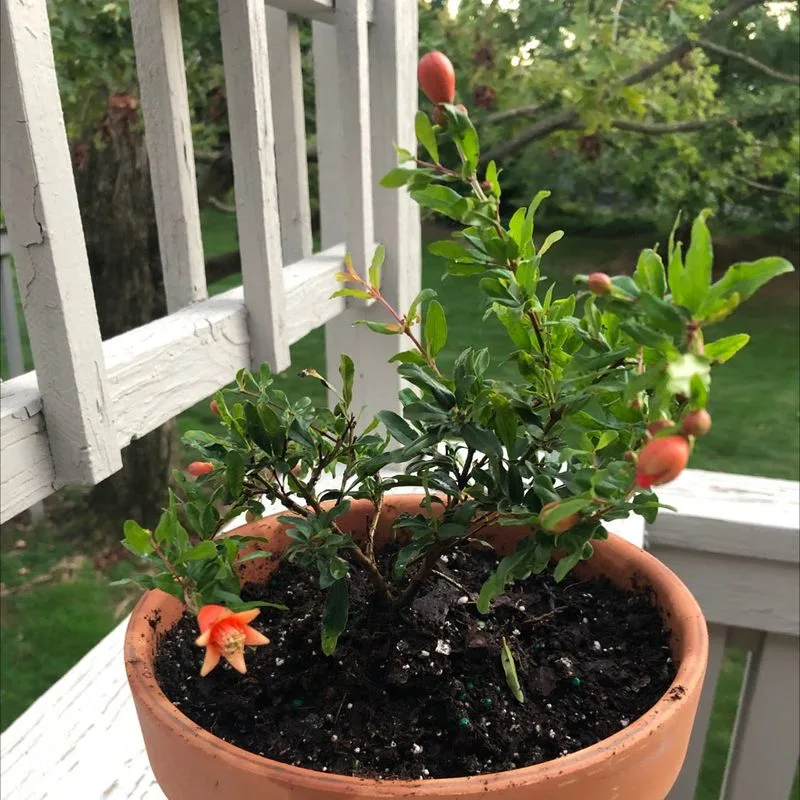
Pomegranate trees require well-draining soil to thrive in pots. A blend of potting soil, peat moss, and perlite works wonders by ensuring aeration and moisture retention. Consider adding organic compost to enrich nutrients, boosting growth. Avoid heavy garden soil as it compacts, restricting root expansion. Regularly check soil moisture; over-watering can lead to fungal diseases. The right soil composition not only supports healthy roots but also enhances fruit yield. Creating this ideal environment ensures your pomegranate tree grows vigorously and remains productive year after year.
Proper Planting Technique
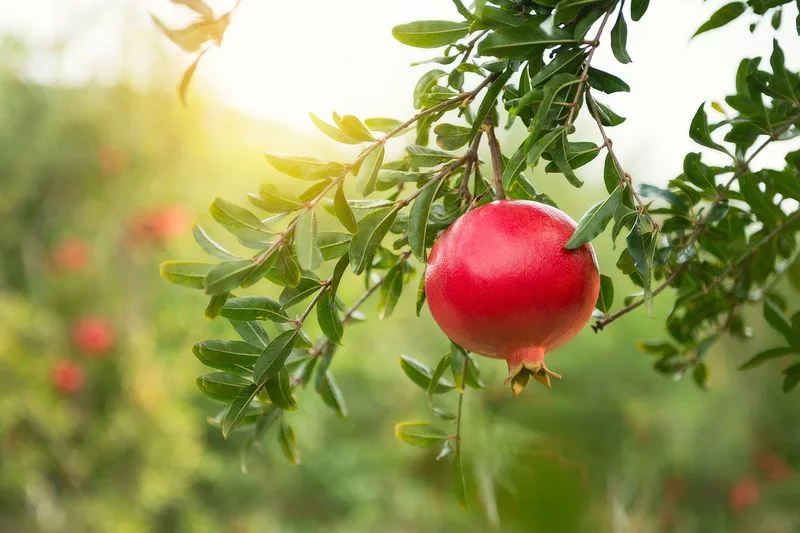
Planting a pomegranate tree correctly ensures its longevity and productivity. Begin by gently placing the sapling in the pot, ensuring the root ball is level with the soil surface. This positioning prevents stem rot. Backfill with your prepared soil mix, pressing lightly to eliminate air pockets. Water the sapling thoroughly after planting to settle the soil around the roots. Placement is key; choose a sunny spot as pomegranates thrive with ample sunlight. This initial care paves the way for a healthy, fruit-bearing tree that will delight for years.
Ideal Watering Practices
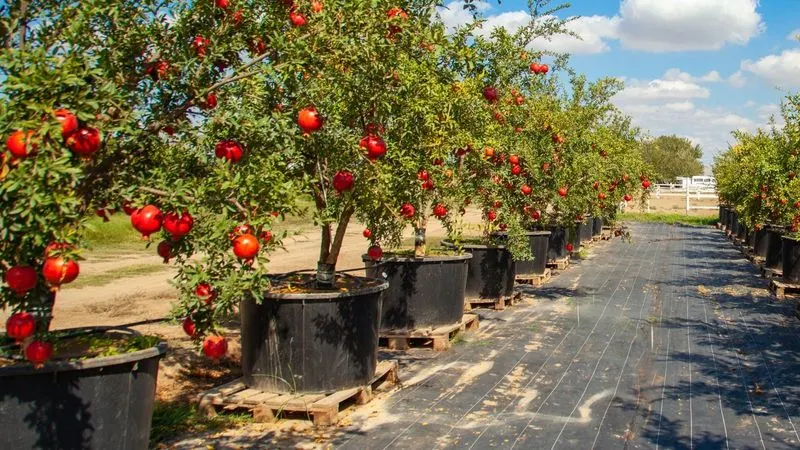
Watering pomegranate trees in pots requires a delicate balance. Over-watering can lead to root rot, while under-watering stresses the plant. Ensure the soil remains moist but not soggy, and let the top inch dry out between waterings. During hot seasons, increase watering frequency, but reduce it in cooler months. A drip irrigation system can provide consistent moisture, preventing over-saturation. Monitor the plant’s response; wilting or yellowing leaves may indicate improper watering. Proper hydration promotes healthy growth, abundant flowering, and fruit production.
Fertilization Schedule
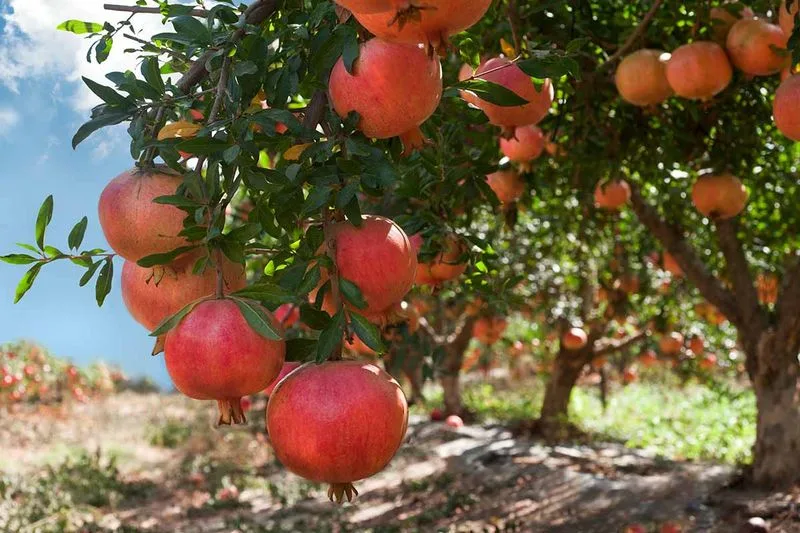
Feeding your pomegranate tree is vital for its growth and fruiting. A balanced, slow-release fertilizer, high in potassium, supports flowering and fruit development. Apply it in early spring when growth resumes, and again in mid-summer. Avoid over-fertilizing, as it can lead to excessive foliage at the expense of fruits. Organic options like well-rotted manure or compost tea offer a natural nutrient boost. Regular feeding ensures your tree remains vigorous, producing luscious fruits. Tailor the fertilization schedule to the tree’s response, adjusting as necessary for optimal results.
Pruning for Health and Yield
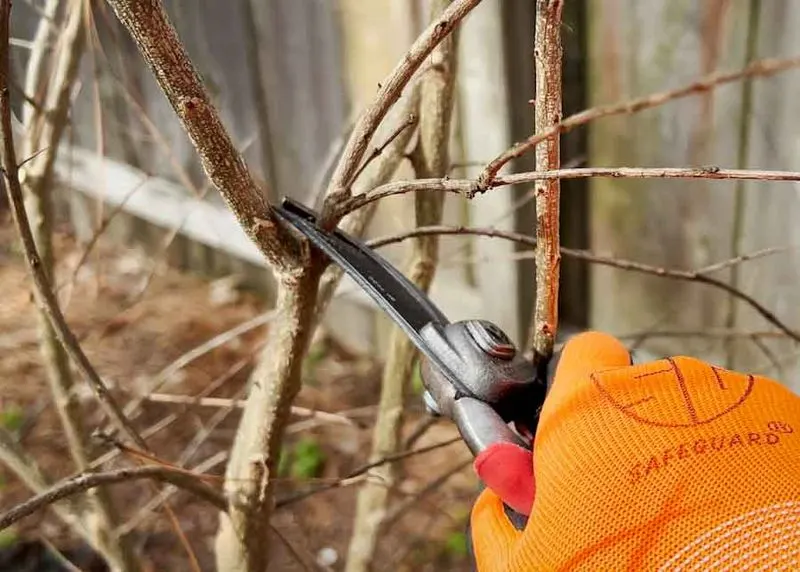
Pruning maintains the health and productivity of your pomegranate tree. Begin by removing dead or crossing branches in late winter. This action promotes air circulation and light penetration, essential for fruit set. Shape the tree by selectively cutting back to encourage a balanced framework. Minimal pruning during the growing season helps manage size and shape. Focus on removing suckers and weak growth. Regular trimming not only enhances the tree’s appearance but also boosts fruit yield. This practice keeps your tree thriving and productive, season after season.
Pest and Disease Management
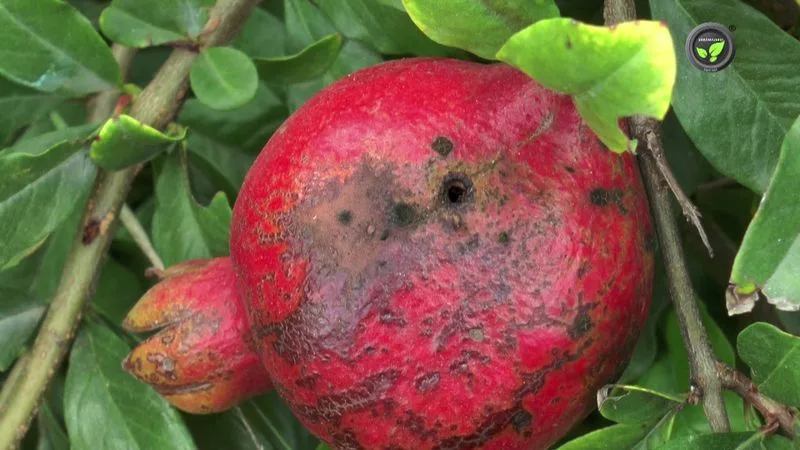
Pomegranate trees in pots are susceptible to pests and diseases. Vigilance is key; inspect regularly for aphids, whiteflies, and fungal infections. Neem oil or insecticidal soap provides effective control for minor infestations. Maintain cleanliness around the tree to deter pests and diseases. Ensure proper air circulation and avoid overcrowding. Regularly check for leaf spots or wilting, early indicators of issues. Prompt action and natural remedies can prevent problems from escalating. A healthy tree, free from pests, is more likely to produce abundant, high-quality fruits.
Sunlight Requirements
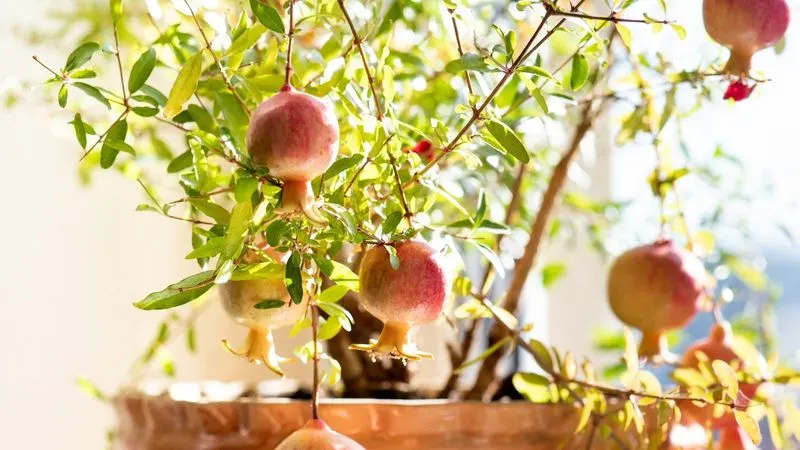
Pomegranate trees flourish in full sunlight, which is crucial for flowering and fruiting. Positioning the pot where it receives at least six to eight hours of direct sunlight daily maximizes growth and productivity. Observe the tree’s response; insufficient sunlight results in sparse foliage and reduced fruit yield. If natural light is limited, consider supplemental grow lights to boost exposure. Sunlight not only enhances photosynthesis but also improves fruit sweetness and color. Ensuring your tree gets enough light is a key factor in cultivating a fruitful pomegranate tree.
Temperature and Climate Adaptation
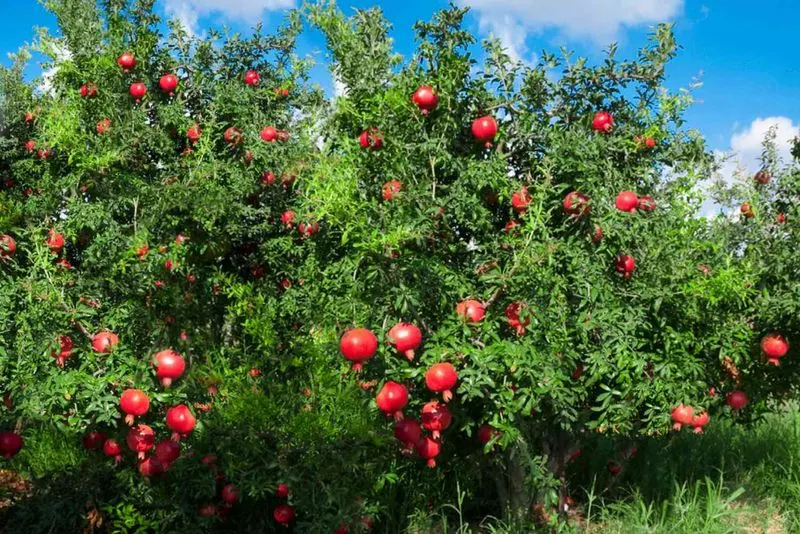
Pomegranate trees are adaptable but prefer a warm climate. They tolerate some cold, but protection is necessary in freezing temperatures. Move pots indoors or use frost covers during cold snaps. In hot climates, ensure adequate hydration and consider shade during extreme heat. Temperature influences flowering and fruiting cycles. Consistent conditions encourage healthy development and fruit set. Understanding your local climate and providing necessary adaptations ensures your pomegranate tree thrives. This adaptability makes pomegranates a versatile choice for various regions, rewarding gardeners with bountiful harvests.
Pollination Process

Pollination is critical for fruit production in pomegranate trees. While some varieties are self-pollinating, others benefit from cross-pollination. Encourage natural pollinators like bees by placing flowering plants nearby. Hand pollination can also be effective; gently brush flowers with a small paintbrush to transfer pollen. This practice increases fruit set, especially in indoor or isolated setups. Monitoring pollination success and adjusting techniques ensures maximum fruit yield. Understanding and facilitating pollination is a crucial step in achieving a productive pomegranate tree that delights with abundant fruits.
Harvesting the Fruits
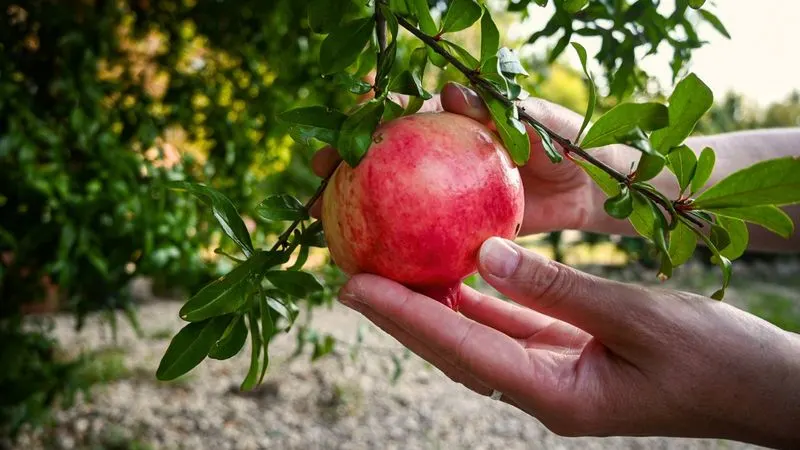
Harvesting pomegranates at the right time ensures the best flavor and texture. Fruits are ready when they change color and sound metallic when tapped. Use gardening shears to cut the fruits, leaving a small stem attached. Avoid pulling, as it can damage the tree. Harvesting in late summer to fall provides the juiciest fruits. A single tree can yield plentiful harvests, rewarding your efforts. Proper timing enhances fruit quality and storage potential. Relish the satisfaction of picking your home-grown pomegranates, a testament to attentive care and cultivation.
Winter Care Tips
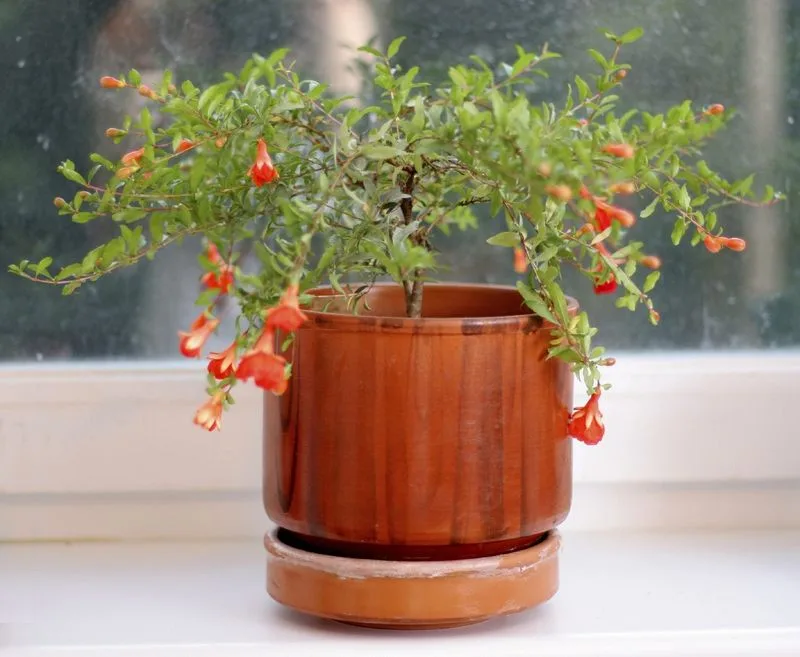
Winter care is essential for pomegranate trees in pots, especially in colder climates. Move the pots indoors or to a sheltered area to protect from frost. Ensure they still receive adequate sunlight, placing them near a window if possible. Reduce watering during winter dormancy, allowing the soil to dry out slightly between sessions. This care minimizes stress and promotes vigor when growth resumes. A healthy winter regimen ensures your tree emerges robust and ready for a new season of growth. Proper winter care is a cornerstone of successful pomegranate cultivation.
Using the Fruits
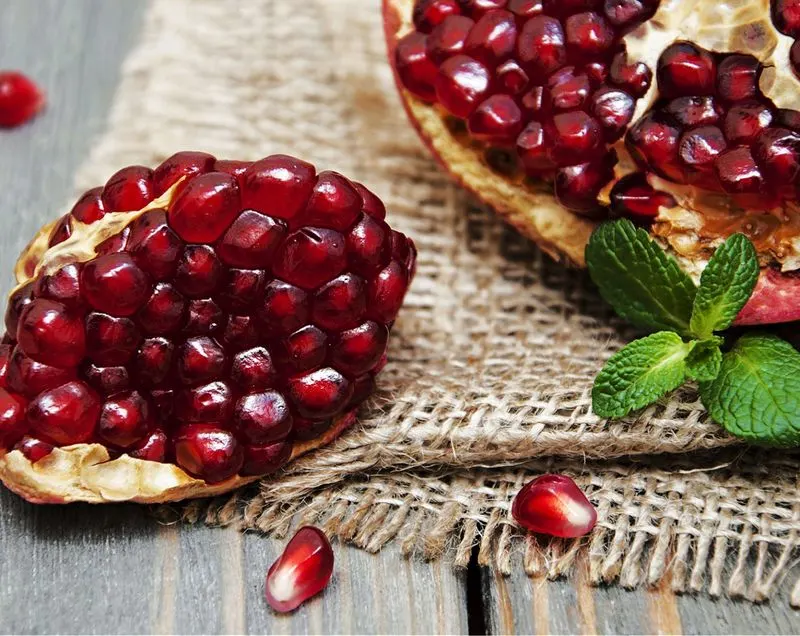
Pomegranates are versatile fruits with numerous culinary uses. Enjoy them fresh by seeding and savoring their juicy arils. Pomegranate juice is a refreshing treat, packed with antioxidants. Use the seeds in salads, desserts, or as a garnish. They add a burst of flavor and color to dishes. Preserving methods like jellies or syrups extend the enjoyment of your harvest. Experimenting with recipes enriches your culinary repertoire, showcasing the fruits of your labor. Growing your own pomegranates offers endless possibilities to enjoy their delightful taste and health benefits.

